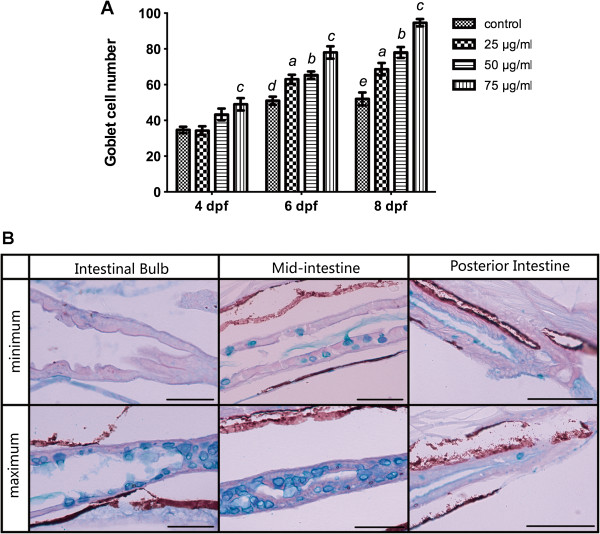Figure 3.
Quantification of goblet cells stained with Alcian blue and periodic acid Schiff reagent (AB–PAS). A: Goblet cell number increased with increasing concentrations of TNBS over time. All error bars represent as mean ± SEM. n=10 larvae per group, aIndicates a significant difference (p<0.05) between TNBS-exposed group (25 μg/ml) and the control, bIndicates a significant difference (p<0.05) between TNBS-exposed group (50 μg/ml) and the control, cIndicates a significant difference (p<0.05) between TNBS-exposed group (75 μg/ml) and the control, dIndicates a significant difference (p<0.05) between control groups at 6 dpf and 4 dpf, eIndicates a significant difference (p<0.05) between control groups at 8 dpf and 4 dpf. B: Representative pictures of maximum and minimum numbers of goblet cells in the intestinal bulb, the mid-intestine and the posterior intestine. Histochemical staining with AB–PAS demonstrates that goblet cells continue to synthesize acidic mucins.

